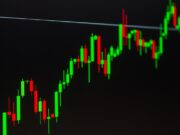Executive Summary
The year 2025 has brought with it a series of jolts to the U.S. stock market. After touching an all-time high of 6,144 in February, the S&P 500 tumbled more than 10% by March, slipping into correction territory. That was just the beginning. On April 15th—coined “Liberation Day” by the White House—President Trump announced sweeping tariffs on imports from China, Mexico, and the EU. Markets responded violently: the S&P 500 fell 11% in just two trading sessions, the sharpest drop since the onset of the COVID-19 pandemic in 2020, wiping out over $6.6 trillion in market value.
Amid these turbulent conditions, a deeper truth is becoming clear: the decade-long dominance of mega-cap tech stocks is showing signs of strain. Economic uncertainty, regulatory pressures, and concentration risk have eroded confidence in names like Nvidia, Apple, and Alphabet. A new investment narrative is forming—one that emphasizes innovation beyond Big Tech.
This report explores three frontier sectors—Artificial Intelligence, Nuclear Energy, and Robotics—and identifies small-cap U.S. companies that are well-positioned to lead the charge in this emerging landscape.
I. The Waning Dominance of Big Tech
Big Tech has carried the S&P 500 for over a decade, with the so-called “Magnificent Seven” accounting for more than 30% of the index’s total value as recently as January 2025. But that level of market concentration is a double-edged sword. When these giants falter, the broader market suffers disproportionately.
Why the Shift?
- Valuation Fatigue: Many of these firms are trading at historically high multiples despite slowing revenue growth.
- Regulatory Headwinds: Antitrust scrutiny is ramping up in the U.S. and abroad. In 2024, the EU levied €4.3 billion in fines on Google and Meta combined.
- Geopolitical Risk: Export restrictions to China, especially in high-performance semiconductors, have hit Nvidia and AMD particularly hard.
- AI Cannibalization: Ironically, AI—a key growth catalyst—is also threatening legacy revenue streams. As more companies develop their own LLMs and infrastructure, demand for centralized services from Google Cloud and Azure is plateauing.
In short, the era of buying FAANG stocks as a default growth strategy may be behind us.
II. The Rise of New Growth Frontiers
1. Artificial Intelligence (AI)
AI has reached escape velocity. According to PwC, AI is projected to contribute over $15.7 trillion to the global economy by 2030. However, the next wave of innovation isn’t coming from the usual suspects. Instead, it’s being led by nimble, focused startups that are bringing AI into niche and high-growth areas.
Company to Watch: SoundHound AI (Ticker: SOUN)
- Specializes in voice-AI technology, enabling hands-free interaction across cars, restaurants, and call centers.
- Partners include Hyundai, White Castle, and several global fast-food chains.
- Revenue grew 80% YoY in Q4 2024; trades at a forward P/S ratio under 4.
Company to Watch: Serve Robotics (Private, IPO rumored 2025)
- A spinoff from Uber, Serve builds sidewalk delivery robots used by 7-Eleven and Pizza Hut.
- Just signed a contract with Uber Eats covering over 20 cities in the U.S.
- Projected to deploy over 10,000 robots by 2026.
2. Nuclear Energy
In the age of AI, the new bottleneck isn’t talent—it’s electricity. Training and deploying large AI models requires immense computing power, and traditional grids are struggling to keep up. This energy crunch has reignited interest in clean, reliable nuclear energy.
Company to Watch: Oklo Inc. (Ticker: OKLO)
- Specializes in compact fast nuclear reactors (1.5MW–15MW), ideal for AI data centers and remote facilities.
- Recently received conditional approval from the U.S. Department of Energy for its first deployment in Alaska.
- Backed by OpenAI’s Sam Altman and Palantir Technologies.
Company to Watch: Kairos Power (Private)
- Developing a fluoride-salt-cooled high-temperature reactor (FHR) with DOE support.
- Partnering with AI firms to power modular server farms.
- Seeking public listing by late 2025 or early 2026.
3. Robotics
The robotics sector is benefitting from labor shortages, defense spending, and the rise of smart infrastructure. From automated last-mile delivery to battlefield drones, robotics is moving from science fiction into real-world profitability.
Company to Watch: Scout AI (Private, Defense-Focused)
- Backed by Pentagon DARPA contracts to develop autonomous robotic scouts for battlefield surveillance.
- Combining robotics and AI in a powerful military-grade package.
- Raised $130 million in Series B funding in March 2025.
Company to Watch: Symbotic Inc. (Ticker: SYM)
- Builds robotic warehouse automation systems for Walmart and Target.
- Revenue has doubled in the past 18 months.
- SYM stock is up over 70% year-to-date, with growing institutional interest.
III. Investment Risks and Considerations
No investment comes without risks—especially in emerging sectors:
- Volatility: Small-cap stocks are inherently more volatile, and these sectors are particularly vulnerable to swings in sentiment.
- Regulation: Nuclear companies face long timelines for approval. AI and robotics firms must navigate ethical and legal minefields.
- Execution Risk: Many of these companies are pre-profit and reliant on future cash flows, making them sensitive to interest rate shifts and funding environments.
But as we often say at Wall Street Watchdogs, volatility is not the enemy—unpreparedness is.
Conclusion: Investing in the Next Chapter
The old guard isn’t going away, but it may no longer lead. Just as Apple, Amazon, and Google once disrupted the incumbents, today’s emerging companies in AI, nuclear energy, and robotics are laying the groundwork for the next era of innovation.
Savvy investors willing to look beyond the index and dive into underappreciated small-caps may be positioning themselves for the kind of asymmetric upside that defined the tech boom of the 2010s.
This is not just a rotation—it’s a regime change. And the time to act is now.





